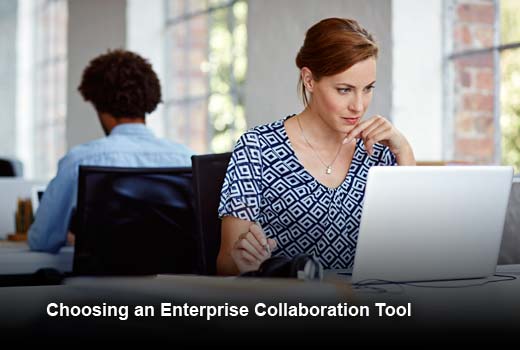Businesses are increasingly recognizing the costs of managing huge amounts of data and documentation with antiquated paper-based systems. As more industries become reliant on information management, changing departmental needs and an increasingly mobile workforce demand greater operational efficiencies.
Chosen carefully, collaboration tools will save time, cut costs and reduce complications associated with storing and retrieving documents throughout a company’s operations. But with multiple options available, identifying the best solution can be difficult. The right system will enhance collaboration, increase efficiency and manage costs effectively, all while maintaining data security and supporting regulatory compliance.
In this slideshow, Digitech Systems has identified five key criteria all companies should consider when choosing an enterprise content management (ECM) system to support collaboration.
Digitech Systems, Inc., enables businesses of any size to more effectively and securely manage, retrieve and store corporate information of any kind using either PaperVision® Enterprise content management (ECM) software or the world’s most trusted cloud-based ECM service, ImageSilo®.
Choosing an Enterprise Collaboration Tool
Click through for detailed information on the criteria companies should consider when identifying the best enterprise collaboration tool, as identified by Digitech Systems.
Consider ALL of Your Company’s Needs
An effective collaboration tool will work across most, if not all, of your company’s departments, business units and work environments – not just provide a solution for a single business division.
- Consider the most pressing information management needs of the company’s operations (accounting, customer service, human resources, etc.).
- Remember to identify the needs of all individual teams or specific functions of the business.
- The correct tool should provide the essential functionality for broad business needs, while offering the flexibility to adapt to the unique structure and operations of a company.
Define Your Collaboration Demands
What types of projects do employees work together on? What types of collaborative functionality do they need? How important is security to safeguard the content of collaborative projects?
Identifying this information will help determine which tool is best. Consider the following to determine your organization’s unique collaboration needs:
- Conduct an in-depth review of each department’s processes, as well as how each department might need to work together in the future.
- Identify project management needs, how process dictates workflow, and how a specific solution will adapt to business needs.
- Ensure that solutions under consideration allow for multiple authors, multiple editors, role-specified permissions, or other workflow considerations like automatic routing.
Ensure Security Safeguards Are Robust
Understand all of the security requirements, paying special attention to information that must be protected to comply with industry and government regulations. Account for varying approval levels to ensure you are protecting the most important information.
- Remember the average employee does not always understand the security needs of information, so any information system needs to offer an ability to enforce security measures that users may not keep top of mind.
- Each document may require different levels of access for data, and your collaboration tools should easily support these needs.
- The best tool will be built for the enterprise to provide you the security controls needed to remain compliant and keep your information safe. Watch out for the security holes left open in tools built for consumers!
Control Costs
As always, the upfront costs of any technology solution will be a prime consideration, but remember to consider other less obvious costs that can often add up to be even more than your upfront costs. Start by asking these questions:
- Are there maintenance and management costs once the tools are installed?
- Are there costs associated with altering system workflow constraints, adding new users, revising search and retrieval permissions or other ongoing system management functions?
- Are there costs for training new employees and keeping current employees proficient in the system?
Examine More than Just the Products
Take the time to conduct a thorough investigation of the companies under consideration. Do they have a solid history and track record?
- How long has the company been providing technology solutions?
- What other types of companies have incorporated their system – and how happy are they with the decision?
- Review the organization’s customer support process and history. Will they support you when you have problems?
- Consider the financial strength of the company.








